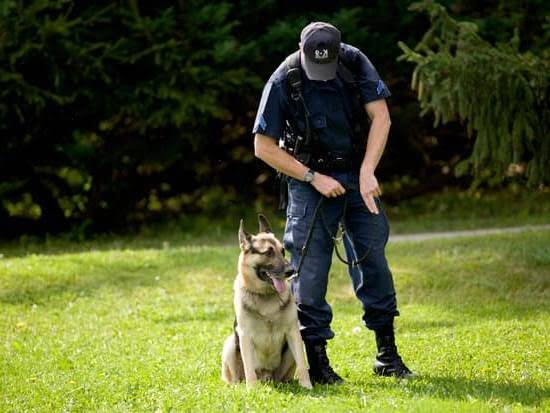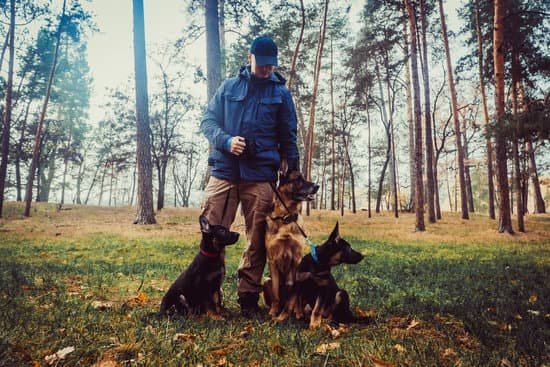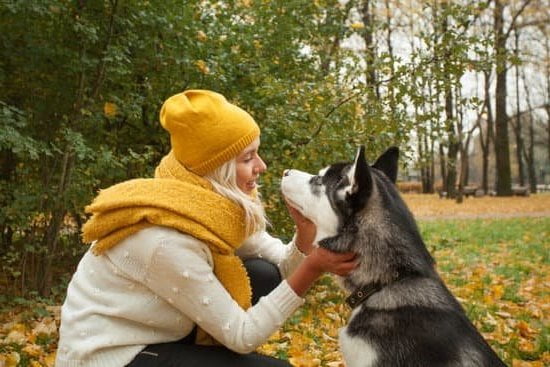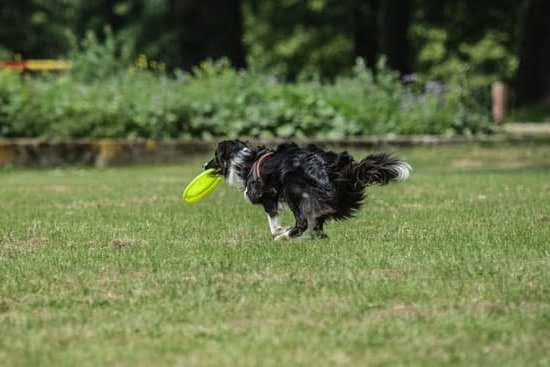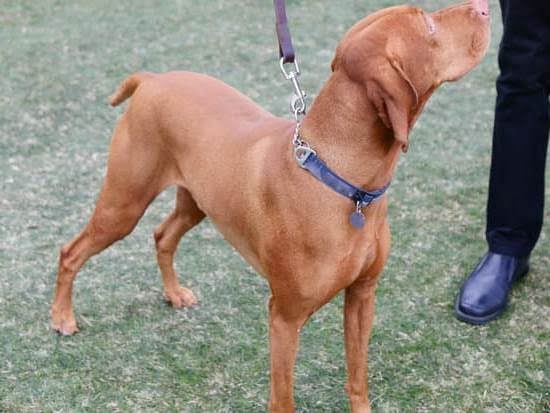Introduction
Training a service dog for someone can be an incredibly gratifying and rewarding experience. Service dogs provide support to those individuals with physical, sensory, or mental impairments by providing help with daily tasks and assistance in public. Service dogs may also alert individuals to potential dangers or provide emotional support. Training a service dog is an investment of time, money, and effort – but it pays off in life-changing results.
To begin training the service dog, it is important to first create a positive reward system that will help the animal learn desired behaviors quickly and efficiently. Positive reinforcement works best for most animals when teaching them new skillsets and behaviors. Food rewards, praise words like “good”, treats, toys and playtime are all effective methods of positive reinforcement that can be used throughout the training process. Additionally it is important to have a consistent schedule so the animal can learn what expectations are laid out for it in different scenarios.
In service dog training there are several important key skills the animal must learn in order to serve its intended purpose such as working on a leash while ignoring distractions or other people, understanding basic obedience behaviors such as heeling correctly on command, responding correctly to verbal commands such as “sit” or “down”, not barking inappropriately at people or other animals, knowing how to stay focused on commands when around distractions like other people or animals presenting themselves as stimuli triggers for attention away from its master..etc. All these skills must be taught progressively starting from small incremental steps at first then gradually incorporating more advanced challenges into their practice routine until they are comfortable enough with each action required from them.
Lastly socialization is an equally important part of training for any service dog especially when interacting with strangers in public settings; making sure your service dog follows commands such offering help picking up items from shelves or opening doors by pulling handles gently etc., this socialization practice would need both consistent repetition plus introduction of new environments and people constantly so they feel comfortable enough not only listening but offering help autonomously without obvious guiding signals from its handler/master
Service Dog Requirements
In order to become an officially recognized service dog, the animal must meet and adhere to both legal and regulatory requirements. This means that all service dogs must be specially trained and clearly identifiable as such.
The first requirement for a service dog is that it must have completed the necessary training, which is often provided by a certified agency or trainer. For example, in the US most service animals are registered with Assistance Dogs International (ADI), a nonprofit organization that strives to ensure the health, safety, and quality of assistance dogs around the world. Depending on their field of work, each animal may need to complete specialized training, such as guide/mobility work for those assisting people who are vision impaired or have mobility limitations, social skills for therapy animals or PTSD dogs who provide comfort during stressful situations.
In addition to training requirements all established service dog operations require that certified service animals wear an identifying vest or harness so they can be easily identified in public settings. This can help people understand that the animal is providing an important job and should not be harassed or distracted while they are ‘at work’.
Finally, depending on their region of operation most service dogs will also need to have up-to-date vaccinations and check-ups conducted by licensed veterinarians with documentation provided for health records. This ensures the animals remain free from any physical illness or ailments which could impact their ability to perform their duties safely and effectively on behalf of their handler(s).
Choosing the Right Service Dog
When selecting a service dog for someone, the temperament is of utmost importance. The dog must be friendly, approachable, and eager to learn. In general, smaller breeds of dogs make great service animals because they are easier to teach and manage. Breeds such as poodles, labradors, golden retrievers, and terriers are all popular choices when it comes to training service dogs. Furthermore, it is important to make sure that the potential dog is screened for any major health issues that would prevent it from properly engaging in activities such as seeing-eye duties or providing support while walking.
Before commencing the actual training process, an individual wanting a service animal should make sure that their lifestyle provides adequately for the necessary structure needed during training. Setting up a daily routine with consistent commands and reinforcement will help set up a strong foundation that can be easily built upon over time. Active playtime outside should also be included in order to give the dog chances to explore unfamiliar sights, smells, and sounds typically encountered in everyday life settings where people live with service animals.
It is also beneficial to put some time into researching different organizations who specialize in service dog training in order get an understanding of what is expected from both side of this relationship – especially since these organizations have spent years perfecting techniques on how best to teach a service animal condition behaviors such as appropriate responses to various environments or individuals as well as proper housekeeping practices (e.g., care of leather goods). Additionally researching certifying bodies who offer official certification programmes can also be advantageous towards ensure that your trained dog meets international standards for public access (e.g., Certified Service Dog International).
Training Basics
Before you begin training your service dog for a specific purpose, you’ll need to establish a foundation of basic obedience commands for it. Start by teaching the appropriate behaviors with plenty of rewards and consistency. Establishing the “sit,” “stay” and “come” commands are essential in getting your service dog to respond quickly to verbal directions and cues when in public situations or medical emergencies. These primary commands form the basis for other types of complex tasks. Introducing name recognition is also beneficial, as it helps when giving more specific instructions such as, “Sammy sit”.
In addition, other commands such as “heel” or “close” are beneficial in helping your service dog learn how to stay close to their handler at all times and always keep their focus on the task at hand without distracting. You may also want to incorporate dog-proofing techniques during this early phase by introducing behaviors such as not jumping on people or furniture. Teaching crate training should also be included in order to create parameters around when and where your service animal can go/not go while out in public. Finally, incorporating basic tricks like “roll over” or “speak” can help keep up enthusiasm while learning obedience. These tricks serve not only a distraction from the severity of more important tasks, but can often help break the tension when dealing with difficult medical episodes or other stressful events
Socialization Opportunities
It is important to provide proper socialization for your service dog. Socializing your pup will help make them more comfortable in different environments and more capable of responding to their owner’s needs. It is important to expose your pup to as many new people and situations as possible so that they become accustomed to varying environments, people, and other animals. Some ways you can ensure that your service dog has adequate socialization include taking them on regular walks around the neighborhood, attending puppy classes, visiting pet stores, and introducing them to friends or family members.
In addition to these things, consider signing up for specialized activities including agility classes or search and rescue instruction which can give your pup increased exposure to loud noises and novel environments; this will be especially useful for those who need their animal for specialized tasks. Regular trips outside of their home environment also offer excellent opportunities for parks, beaches and other recreational locations where your pet can enjoy interaction with other animals and people in a safe environment. Finally, it is essential that you get your service dog used to being touched by strangers so they’re able to stay calm during medical care visits or emergency response scenarios when they may need immediate attention from someone they don’t know very well.
Public Access Training
Public access training is an essential part of preparing a service dog to provide assistance and protection to someone who may need it. This form of training helps the dog learn how to behave appropriately in various public locations and around people, increasing their reliability and safety when they are out in public with their handler.
Public access training should focus on teaching the service dog specific commands for different tasks such as sitting, lying down, going to heel, walking on a leash, and handling stairs or obstacles. Depending on the specific needs of the person being assisted, additional commands may be taught such as retrieving items, opening doors or drawers, or pushing buttons. For instance if someone has an auditory impairment then they may require their service dog to alert them to nearby sounds by barking.
The process of training your service dog should begin in a home based environment and gradually move into more public areas such as parks, shopping centers and public transport networks. Each new area should be broken down into smaller sections so that distractions are kept at a minimum while the dog learns effective behaviors in each situation. The verbal command structure should also remain consistent despite any changes of location or environment so that your pet can quickly understand what is expected of them. When out in public it’s important that your pet is always alert but under control at all times; by setting clear expectations and boundaries you will ensure that their behavior is reliable regardless of surrounding stimuli.
Teaching Specialized Tasks
Once the dog has passed basic obedience tests and developed a trusting relationship, it is time to teach them more advanced or specialized tasks to help someone with their disability. For example, a service dog can be trained to respond to specific cues to help someone with a physical disability open/close doors and cabinets, turn off lights, carry packages, fetch wheelchairs or walkers, or operate other assistive devices. They can also be trained ‘brace and balance’ skills which are special commands used to help support an individual when they stand up or transition between sitting and standing positions. With consistency while training these commands, the dog will eventually learn how to perform them on its own without verbal prompts. Additionally, a service dog can be taught calming behaviors that can calm those with anxiety. Specialized commands such as deep pressure therapy may be used in case of emergencies by the handler which would rely on the service dog for comfort. Dogs may also be taught alarm notification systems for deaf or hard-of-hearing people so that they are alerted for fire alarms or doorbells ringing. The potential tasks that a properly trained service dog can do for someone is endless!
Finishing Touches
One of the important steps in training a successful service dog is to make sure all the adjustments necessary to ensure effective use are complete. To have a successful team, all aspects must work together efficiently. Finishing touches should be part of every service dog-handler work session, and often occur during the final phase of training. One way to do this is through creating and practicing responses with different variables such as environment changes and unexpected interruptions. This will help give your dog an understanding of what is expected, no matter their situation. Moreover, it may be advantageous to include maintenance follow up sessions from an experienced professional or mentor in order to keep the skillset sharp. These could include brushing up on certain commands that were once perfect but may have become rusty due to lack of usage over time and working on new ones that raise the level of service both you and your dog can offer each other. With regular review and follow-up sessions taking place throughout the process, you will have a better chance at reaching peak effectiveness with your service dog when implementing them into everyday life.
Conclusion
Training for a service dog requires patience, a gentle approach and consistency. It is essential to have clear objectives in mind when one starts the training process. Before starting any type of training, it is important to do an assessment of what the individual is capable of doing, their needs and the possible difficulties that might arise when training. Once this has been established, it is important to establish achievable goals, decide on appropriate tools and equipment and choose reward-based methods. Depending on the specific task at hand, there may be specific types of training involved such as agility or scent detection. Each task should then be broken down into smaller steps for easier comprehension by the dog – start by rewarding small successes until it reaches completion and have plenty of rest breaks. Finally, practice regularly with supervision from people who are familiar with service dogs so that they can help coach both handler and dog to success!

Welcome to the blog! I am a professional dog trainer and have been working with dogs for many years. In this blog, I will be discussing various topics related to dog training, including tips, tricks, and advice. I hope you find this information helpful and informative. Thanks for reading!

